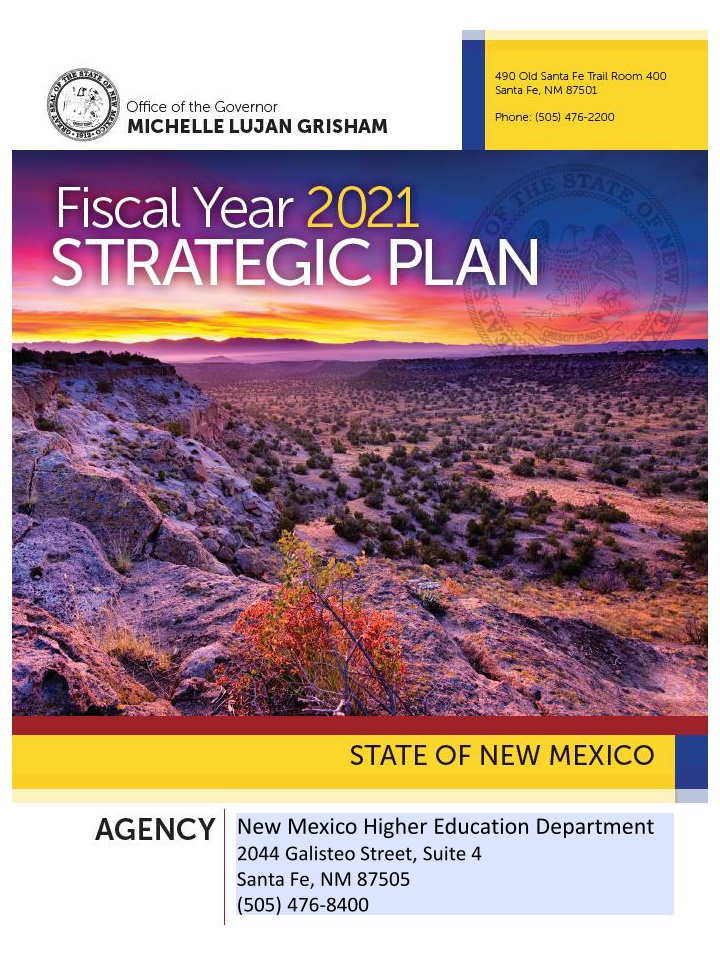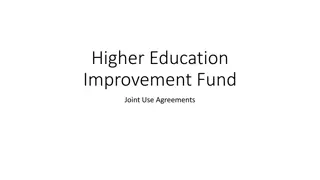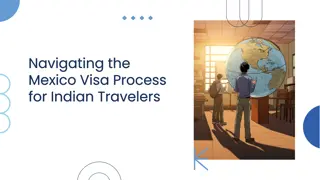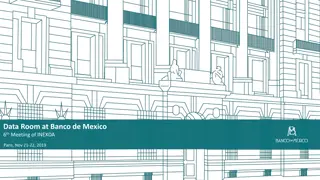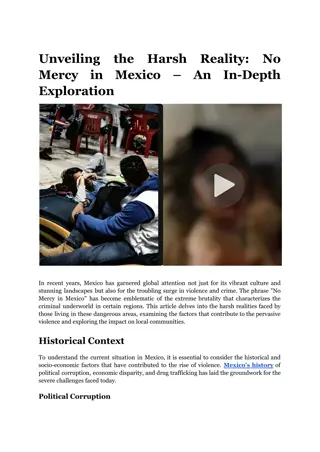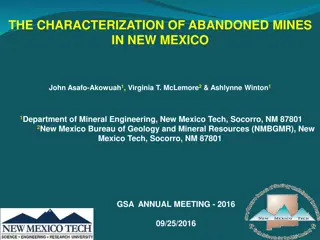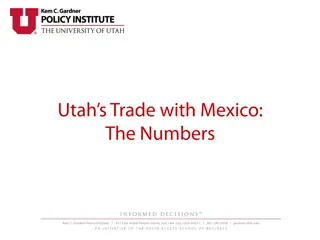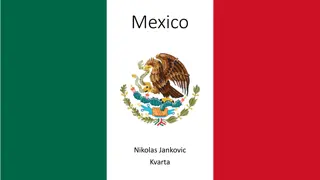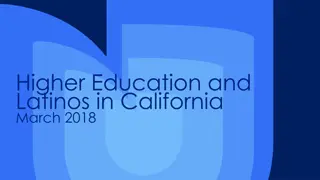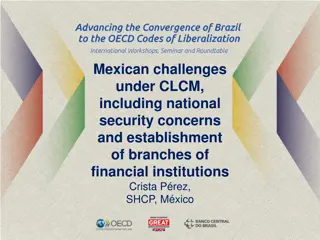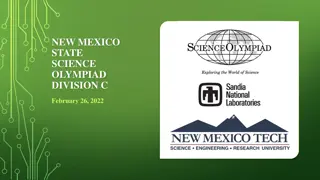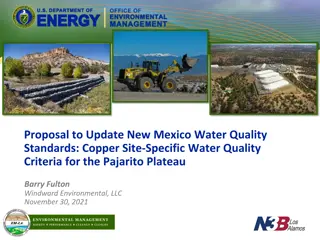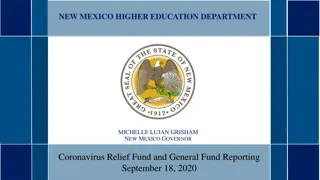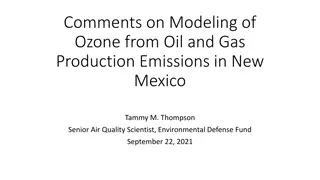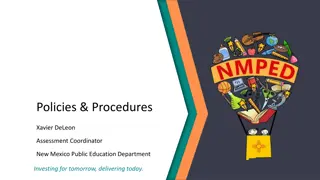New Mexico Higher Education Department
Providing contact details for the New Mexico Higher Education Department located at 2044 Galisteo Street, Suite 4, Santa Fe, NM 87505. You can reach them at (505) 476-8400 for inquiries or assistance related to higher education in New Mexico.
Download Presentation

Please find below an Image/Link to download the presentation.
The content on the website is provided AS IS for your information and personal use only. It may not be sold, licensed, or shared on other websites without obtaining consent from the author.If you encounter any issues during the download, it is possible that the publisher has removed the file from their server.
You are allowed to download the files provided on this website for personal or commercial use, subject to the condition that they are used lawfully. All files are the property of their respective owners.
The content on the website is provided AS IS for your information and personal use only. It may not be sold, licensed, or shared on other websites without obtaining consent from the author.
E N D
Presentation Transcript
New Mexico Higher Education Department 2044 Galisteo Street, Suite 4 Santa Fe, NM 87505 (505) 476-8400
Leadership Leadership Note from HED Cabinet Secretary Kate O Neill, Ed.D. Governor Michelle Lujan Grisham s priorities Transformative strategic investments in public education: My team will work hand-in-hand with educators, students, parents, and communities to build a higher education system that is accessible and equitable, and that provides New Mexicans with every single opportunity they need to succeed. Access to high-quality higher education throughout the state: We will keep tuition low and leverage federal financial aid for Pell eligible students going straight from high school to college. We will ensure a tuition free start to college through the launch of New Mexico s Opportunity Scholarship. Higher Education changes lives. We are excited to roll out our vision for the future of Higher Education in New Mexico. A Lottery Scholarship now available to Tribal college students that is vital and solvent on into the future: Further investments in the College Affordability Act, teacher and healthcare provider funds, and research endowments which will improve access and student success. Our plan is anchored by: Access Affordability Quality Support Student Success Environmentally sustainable Capital Outlay Projects: In line with the Paris Climate Accord, we will ensure a reduced carbon footprint and Leed level standards for all buildings on college campuses. Sustainable investments in the workforce: After boosting the minimum wage for the first time in a decade, we will continue to expand our apprenticeships and invest in job training programs. I welcome feedback from stakeholders and look forward to serving all New Mexicans as we continue to move our state forward. Enhanced collaboration for better data collection, analysis and dissemination: improved infrastructure, access, processing, analysis and use of student and institutional data. Build Longitudinal Data System across EEC, PED, HED, and DWS that fully uses a standard ID.
Table of Contents Table of Contents Table of Contents Table of Contents Vision, Mission, and Values . . 4 Organizational Structure .......................................... 5 Overview . 6 Budget .. 7 Programs and Strategies .. 8 Activities .. 9 Statutory Authority by Program .. 10 Summary .. 12 3
Department of Finance and Administration Department of Finance and Administration Dept. of Finance and Administration Dept. of Finance and Administration Vision, Mission and Values Vision, Mission and Values Vision, Mission, and Values Vision, Mission, and Values OUR VISION New Mexico will be known globally for accessible, affordable, high-quality postsecondary education and research. OUR MISSION Guide, serve, and support students and higher education institutions to ensure enhanced opportunities to recruit, retain, and graduate highly-skilled and well-informed graduates. OUR GUIDING VALUES Access, Affordability, Quality, Accountability, Collaboration, Communication, Opportunity, Effectiveness, Support, Service, and Success. 4
Policy Development, Fiscal Analysis, Budget Oversight and Education Accountability Policy Development, Fiscal Analysis, Budget Oversight and Education Accountability (P541) (P541) Organizational Structure Organizational Structure Governor Administrative Assisstant Cabinet Secretary Deputy Cabinet Secretary General Counsel Chief of Staff and CFO GEARUP New Mexico Information Services Adult Education Planning and Research Administrative Services Private Postsecondary Human Resources Institutional Finance Public Postsecondary Schools & Policy Constituent Services Financial Aid Indian Education New Mexico Trust Board Capital Outlay 5
Policy Development, Fiscal Analysis, Budget Oversight and Education Accountability Policy Development, Fiscal Analysis, Budget Oversight and Education Accountability (P541) (P541) Overview Overview Purpose of the Department HED provides accessible, quality research and oversight so that all stakeholders can benefit from higher education opportunities and make informed decisions for the enhancement of New Mexico and the world. Program Users Eligible students who seek undergraduate, graduate/professional, dual credit, workforce training, and/or adult education, from one of New Mexico s higher education high-quality programs. Benefits to New Mexicans Access to adult and higher education Affordable high-quality training Affordable high-quality certificates and degree programs Increased literacy and numeracy as well as social/emotional skills Leverage of federal research, financial aid, and investment funds statewide Improved health and socio- economic outcomes due to educational attainment More highly skilled workforce Retention of highly skilled workers Increase in the percentage of college-ready, college enrolled, and graduating students More informed and educated public 6
Policy Development, Fiscal Analysis, Budget Oversight and Education Accountability Policy Development, Fiscal Analysis, Budget Oversight and Education Accountability (P541) (P541) Budget Budget Higher Education Department FY20 FTE, Operating Budget and Higher Education Appropriation (in thousands) Permanent FTE Positions Term FTE Positions Total FTE HED Department HED Department Pass-through^ Financial Aid Program I&G Appropriation to Institutions* Additional General Fund Appropriations* Capital Outlay Pass-through Total Higher Education Budget 31 8 39 $ $ $ $ $ $ $ 3,910.90 23,111.80 64,713.20 631,770.80 235,272.80 80,461.00 1,039,240.50 ^includes ABE, ENLACE, MESA, AE Pilot, and other programs *includes compensation increase pass-through 7
Policy Development, Fiscal Analysis, Budget Oversight and Education Accountability (P541) Policy Development, Fiscal Analysis, Budget Oversight and Education Accountability (P541) Programs and Strategies Programs and Strategies Program Goals and Objectives Report on enrollment trends, degree and graduation rates, financial aid, time to degree, credit accumulation, credentials, faculty and research, student transfers, dual credit, common course numbering system, general education program, degree mapping, advanced placement, remediation rates, adult education demographic and performance data Record, edit, audit, report, and archive all financial transactions for HED in compliance with all applicable state and federal laws and regulations and with generally accepted accounting principles Ensure maintenance and access of closed school records, including student transcripts requests Provide statewide academic instruction and education services to adults below the postsecondary level to increase their ability to read, write, and speak English and demonstrate knowledge necessary to attain a secondary school diploma, transition to postsecondary education and training, and enter a career pathway Oversee and provide training and support to sub grantees receiving state and federal funding totaling about $10,000,000 to provide services to about 12,000 adult students each year Participate as core partner under the Workforce Innovation and Opportunity Act with employers and postsecondary institutions to provide workforce preparation and training to New Mexicans with barriers to employment. Deliver high quality and timely services related to academics, literacy and college-readiness programs, financial aid, capital outlay, budget oversight, legal, and information technology support Provide comprehensive annual reporting Ensure adequate training and educational attainment support for HED employees Provide an overall positive experience for HED employees and constituents Maintain positive employee morale through employee engagement and appreciation activities Create successful pipeline and succession plan for key positions Ensure Performance Management processes are designed and implemented to align and maximize individual performance with HED goals Strategic Actions Expand college access and affordability Provide training to Boards of Regents Calculate the Higher Education Funding Formula Provide budget and fiscal oversight Collect and maintain data from higher education institutions through use of the Electronic Data Editing and Reporting (eDEAR) system Prepare budget requests, operating budgets, and budget adjustment requests for HED Oversee private postsecondary institutions Performance Measures Percentage of New Mexico's workforce population, ages 25 -64, with a postsecondary credential Average number of credit hours accrued in the attainment of a bachelor's degree by students graduating from state-funded higher education institutions Average number of credit hours accrued in the attainment of an associate's degree by students graduating from state-funded higher education institutions Percentage of first time, full time, degree seeking students, from the most recently available cohort, at state-funded universities who graduated within four-years of their initial enrollment. Percentage of first time, full time, degree seeking students, from the most recently available cohort, at state-funded community colleges who graduated within two-years of their initial enrollment Percent of unemployed adult education students obtaining employment two quarters after exit Percent of adult education high school equivalency test-takers who earn a high school equivalency credential Percent of fiscal watch program quarterly reports from institutions submitted to DFA and LFC. Percent of high school equivalency graduates entering postsecondary degree or certificate programs. Percent of eligible state loan for service (LFS) applicants receiving funds. Percent of eligible state loan repayment applicants receiving funds. 8
APPENDIX APPENDIX APPENDIX APPENDIX Policy Development, Fiscal and Data Reporting Implement the New Mexico common course numbering system, general education core program, degree mapping, statewide advanced placement policy, and dual credit program Analyze and report on the effectiveness of the dual credit program Analyze and report on how students move through New Mexico s higher education institutions and whether the common course numbering system, general education core program, and degree mapping have improved transfer between institutions Publish an annual accountability report that includes each higher education institution s and sector s graduation rates, average time to degree, average credit accumulation, most frequent credentials awarded, and information on faculty and research Publish data reports addressing college remediation, enrollment, degree, graduation rates, financial aid, tuition and fees, funding formula data tables, and the NMHED Annual Report Collect and maintain data from higher education institutions through use of the Electronic Data Editing and Reporting (eDEAR) system APPENDIX APPENDIX Activities Activities Program Support and Oversight Record, edit, audit, report, and archive all financial transactions for HED in compliance with all applicable state and federal laws and regulations and with generally accepted accounting principles Prepare budget requests, operating budgets, and budget adjustment requests for HED Central disbursement of cash to vendors Central budgetary controls Accounting for cash receipts and monthly reconciliation for cash to the State Treasurer s financial reports Allocation of appropriations from the State General Fund Processing, recording, summarizing, and reporting financial transaction information Annual production and audit of the State of New Mexico Comprehensive Annual Financial Report (CAFR) Provide statewide academic instruction and education services to adults below the postsecondary level that increase their ability to read, write, and speak English and demonstrate knowledge necessary to attain a secondary school diploma, transition to postsecondary education and training, and enter a career pathway Oversee and provide training and support to sub grantees receiving state and federal funding totaling about $10,000,000 to provide services to about 12,000 adult students each year Participate as core partner under the Workforce Innovation and Opportunity Act with employers and postsecondary institutions to provide workforce preparation and training to New Mexicans with barriers to employment Maintain demographic and performance data and report annually on high school credential attainment, transition to postsecondary education and training, employment and wage status, and educational skill level gains Oversee private postsecondary educational institutions and public out-of-state authorization, and authorization for agents to recruit New Mexico students to attend out of state higher education institutions Ensure maintenance and access of closed school records, including student transcript requests Fiscal Management, Budget Approval, Capital Outlay and Oversight Development of the Higher Education Funding Formula Provide budget and fiscal oversight of higher education institutions and perform supplementary audit and monitoring functions when warranted Administer the Executive Order 2013-006 for grants of state capital outlay appropriations Oversee and provide training and support to higher education institutions receiving state capital outlay appropriations Coordinate annual hearings for higher education institutions to request capital outlay funding in accordance with 5.3.9 NMAC Provide review and approval of capital projects in accordance with 5.3.10 NMAC 9
APPENDIX APPENDIX Statutory Authority by Program Statutory Authority by Program Policy Development, Fiscal Analysis, Budget Oversight and Education Accountability Provide review and consultation for all new state-funded associate, baccalaureate, graduate, and professional degrees (21-1-26 NMSA 1978) Analyze the financial impact of new degree programs as part of the department's review of the institution's operating budget (21-1-26 NMSA 1978) Provide oversight of all private post-secondary educational institutions operating within the state and provide registration to all regionally accredited private institutions and licensure to all nonregionally accredited private institutions (21-23-5 NMAC 1978) Provide review and make recommendation to the legislature for any new public institutions or campuses (21-1- 26.9 NMSA 1978) Plan and budget for the statewide adult basic education program and establish a protocol to provide equitable access to funding for adult basic education agencies (21-1-26.11NMSA 1978) Develop, with the governing bodies of the institutions, a five-year plan for funding the infrastructure renovation and expansion projects designated by the department as the highest priority of significant needs and determine projects to be funded (21-1-26.12NMSA 1978) Develop and publish a statement of statewide educational needs and guidelines to assist the institutions in the development or modification of institutional strategic plans, in consultation with the public institutions (21-1- 26.12 NMSA 1978) Conduct studies of statewide educational needs and make recommendations to the governor, the legislature and the institutions (21-1-26.12 NMSA 1978) Carry out a continuing program of statewide planning for post-secondary education (21-2-5 NMSA 1978) Conduct assessment of present and projected needs for the various types of postsecondary education in all parts of the state (21-2-5 NMSA 1978) Conduct analysis of the effectiveness and productivity of postsecondary educational programs and an identification of marginal programs and of unnecessary or excessive duplication of programs (21-2-5 NMSA 1978) Identify present and projected needs for postsecondary education on a statewide basis by identifying necessary expansion, elimination, or establishment of new programs or institutions (21-2-5 NMSA 1978) Identify present and projected needs for postsecondary education on a statewide basis by identifying necessary expansion, elimination, or establishment of new programs or institutions (21-2-5 NMSA 1978) Develop strategies for infusing occupational education and career education into the educational system at all levels on an equal basis with traditional academic education (21-2-5 NMSA 1978) Develop provisions for the operation of postsecondary education and for the effective utilization of federal, state and local funding available for such education (21-2-5 NMSA1978) Establish a program for receipt of distance education by students in the state; and of distance education to students in other states (21-23B-3 NMSA 1978) 10
APPENDIX APPENDIX Statutory Authority by Program Statutory Authority by Program Fiscal Management and Oversight Be concerned with the problems of finance of those public educational institutions designated in Article 12, Section 11 of the Constitution of New Mexico and other public post-secondary educational institutions in the state. (21-1-26 NMSA 1978) Be concerned with adequate financing of public institutions and with the equitable distribution of funds (21-1- 26 NMSA 1978) Receive, adjust and approve the budgets submitted by public institutions prior to the submission of these budgets to the Department of Finance and Administration (21-1-26NMSA 1978) Administer funds furnished under acts of congress for post-secondary educational institutions (21-1-26 NMSA 1978) Provide prior approval for proposed purchase or construction or remodeling for public institutions (21-1-21 NMSA 1978) Conduct special verifications of the institutions to include enrollments, fund balances, compliance with legislation, comparison of expenditures to budgets and other areas (21-1-26.3 NMSA 1978) Make recommendations to the executive and to the legislature for determining appropriations from the state general fund to implement the planned system of postsecondary education pertaining (21-2-5 NMSA 1978) Present to the legislature a comprehensive funding request and a legislative priorities list for all higher education contemplating the needs of all public post-secondary educational institutions and programs (9-25-9 NMSA 1978) Develop a funding formula that will provide funding for each institution of higher education to accomplish its mission as determined by a statewide plan (21-2-5.1 NMSA1978) Community Development, Local Government Assistance and Fiscal Oversight Develop and maintain programs for the orientation and in-service education of members of the boards of regents and the governing bodies of other public postsecondary institutions (21-26 NMSA 1978) Enter into agreement for the western interstate commission for higher education to administer and the state to participate in a state authorization reciprocity agreement (21-23B-3 NMSA 1978) Program Support Administer over 20 programs that finance higher education, including aid programs, legislative lottery scholarship, loan for service and loan repayment programs and the college savings program (21-21B-1 through 21-22I-8 NMSA 1978) Submit an annual report to the governor and the legislature (21-2-7 NMSA 1978) Make and adopt procedural rules necessary to carry out duties of the department (9-25-8NMSA 1978) Appoint and convene a higher education advisory board to advise the secretary and the governor on policy matters (9-25-10 NMSA 1978) 11
APPENDIX APPENDIX Summary Summary The New Mexico Department of Higher Education provides vital support, oversight, guidance, policy, reviews, and capital outlay coordination throughout the state. The Department oversees both public and private institutions of post-secondary education for the benefit of students, communities, and the state as a whole. HED s goal is to support post-secondary educational attainment at the level of 66% of New Mexicans with a degree or credential by 2030 the Route to 66! 12
